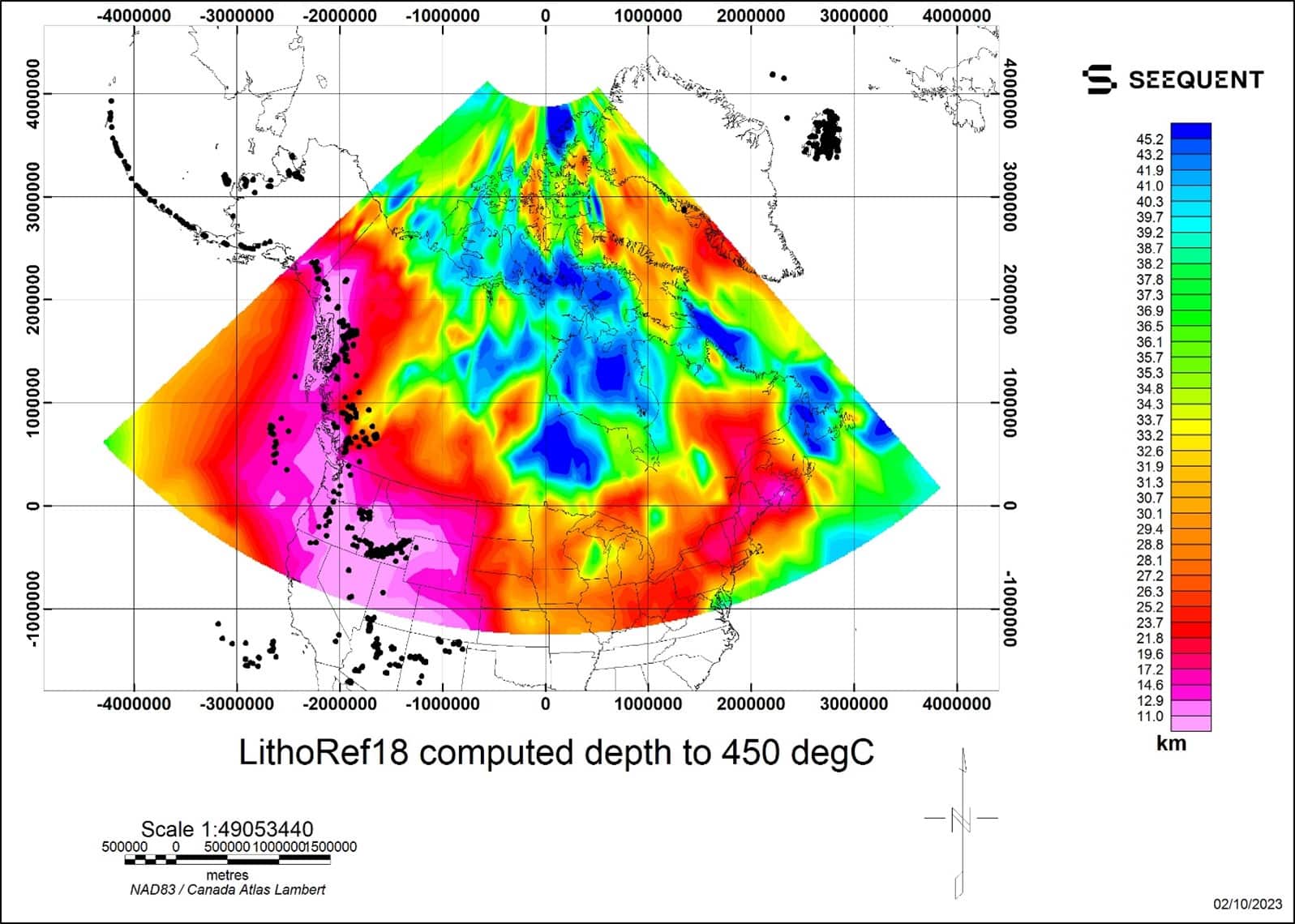Mapeo de la isoterma de 450 °C: mapeo de incertidumbres y el potencial de la geotermia profunda de Canadá
Seequent, The Bentley Subsurface Company, has collaborated with researchers from the Clean Air Task Force (CATF) and the University of Twente to map and improve understanding of deep geothermal resources and their potential in Canada to support decarbonisation ambitions.
Seequent is presenting this work for a technical session on Geothermal in Northern Canada at GeoConvention 2023 on Friday, May 12, 2023; 8:35 AM – 11:50 AM.
PRESENTATION: Superhot rock energy and mapping depths to 450°C: Mapping, uncertainties and the potential of deep geothermal in Canada: Josh Sellars, Project Geophysicist, Seequent.
Using global geodynamic models, we examine and compare the predicted surface heat flow models and the computed depths to the 450C isotherm – the target isotherm for supercritical geothermal resources. The results from these models allow us to characterise the first-order nature of the thermal structure of the Earth’s lithosphere and the geodynamic environment these thermal anomalies occur. We describe uncertainties in the depth and spatial location of the thermal anomalies between models. Using independent datasets such as Curie depth models, we explore uncertainties in the location of thermal anomalies and investigate how to develop a thermal model that can be used for the delineation and size of next-generation, superhot rock geothermal opportunities.
CONFERENCE PAPER: Mapping the 450°C isotherm: Mapping uncertainties and the potential of deep geothermal in Canada (researchgate.net) Authors: Josh Sellars, Seequent, Canada; Philip, J. Ball, CATF, USA; Kathleen Gould, Seequent, Canada; and Juan Carlos Afonso, University of Twente, Netherlands.
ABSTRACT: In the current geo-political energy environment, many governments around the world are looking towards alternative energy sources to assist with the phasing out of fossil fuels. As a result, geothermal energy has seen an intensification of interest because it may provide cost-competitive, carbon-free, always-available renewable energy, while requiring significantly less land than other energy sources.
Increased exploration of geothermal resources is occurring along with a boom in technological innovations, with an eye towards exploration of deeper and hotter geothermal resources. To explore for supercritical geothermal resources, an improved understanding of subsurface temperatures and pressures is needed.
Successful characterisation of the depth to critical isotherms and potential resource density requires a better understanding of the thermal structure of the entire lithosphere, yet actual hard data remains sparse. The lack of data to constrain the models leads to uncertainties in the global characterisation of thermal anomalies.
Using global lithosphere models (LithoRef18, Afonso et al., 2019), we examine and compare the predicted surface heat flow models and the computed depths to the 450 C isotherm. The results from these models allow us to characterise the first-order nature of the thermal structure of the Earth’s lithosphere and the geodynamic environment these thermal anomalies occur. In addition, we explore uncertainties in the depth and spatial location of the thermal anomalies between models and investigate how to develop a thermal model that can be used for the delineation and size of next-generation, superhot rock geothermal opportunities.

En este documento, centrado en Canadá, utilizamos un flujo de trabajo novedoso para calcular la profundidad hasta 450°C del modelo de referencia global de la litosfera y el manto de LithoRef18. Se utilizó el
Acerca de Seequent
Seequent es un desarrollador de
Acerca de Clean Air Task Force (CATF)
Clean Air Task Force es una organización global sin fines de lucro que trabaja para evitar los peores impactos del cambio climático mediante el rápido desarrollo y despliegue de energías con baja emisión de carbono y otras tecnologías de protección del clima. Si desea obtener información adicional, visite https://www.catf.us




